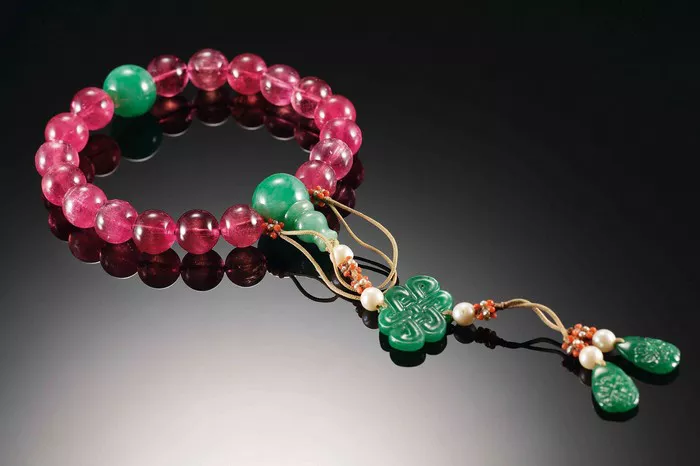Tourmaline is a highly esteemed gemstone in the colored stone market, renowned for its vibrant and diverse color palette. Among the myriad shades it offers, green tourmaline stands out as a particularly captivating variety. Identifying green tourmaline involves a comprehensive understanding of its characteristics, historical background, and scientific properties. This guide will provide a detailed introduction to identifying green tourmaline, suitable for both enthusiasts and professionals.
Historical Background and Naming Origins
Tourmaline’s history dates back centuries. The first significant discovery of green tourmaline occurred in Brazil by Spanish explorers around 1500. During this era, gem identification techniques were relatively rudimentary. As a result, any green gemstone was generically termed an emerald. Similarly, blue stones were often mistaken for sapphires, and red stones were believed to be rubies.
It wasn’t until the 1800s that scientists gained a deeper understanding of tourmaline, recognizing it as a distinct mineral species. The name “tourmaline” is derived from the Sinhalese word “toro-malli,” meaning “mixed gems.” This term was originally applied by the Dutch to gem gravels containing various gem species found in Ceylon, now known as Sri Lanka.
Physical and Chemical Properties
Tourmaline belongs to a group of closely related mineral species that share the same crystal structure but exhibit slight differences in their chemical and physical properties. These minerals include elbaite, liddicoatite, dravite, uvite, and schorl. The majority of gem-quality tourmalines are elbaites, which offer a wide range of colors, including green.
Green tourmaline, like all tourmalines, contains a mixture of aluminum, boron, and fluorine, combined with various elemental impurities such as sodium, lithium, calcium, magnesium, manganese, titanium, copper, and iron. These impurities are crucial in determining the gemstone’s color. For instance, the presence of chromium and vanadium often contributes to the green hue in tourmaline.
Identifying Green Tourmaline
Identifying green tourmaline involves examining several key characteristics:
1. Color and Tone
Green tourmaline can exhibit a variety of shades, ranging from light pastel greens to deep, vivid hues. The color can sometimes appear translucent or opaque, depending on the stone’s purity and composition. A unique aspect of green tourmaline is its ability to display a phenomenon called pleochroism, where the gemstone appears to change color slightly when viewed from different angles.
2. Clarity and Transparency
Clarity refers to the presence of inclusions or flaws within the gemstone. Green tourmaline can often contain internal inclusions such as parallel tubes, needles, or liquid-filled cavities. These inclusions are generally considered acceptable and can even add to the gemstone’s unique charm. However, the fewer and less obvious the inclusions, the more valuable the stone tends to be.
Transparency can vary from transparent to translucent. Transparent green tourmalines are highly valued for their clarity and brilliance, while translucent stones may still be beautiful but may not exhibit the same level of light play.
3. Hardness and Durability
Tourmaline has a hardness of 7 to 7.5 on the Mohs scale, making it a relatively durable gemstone suitable for everyday wear. Its hardness and durability are due to its crystalline structure, which consists of complex silicate chains. This hardness allows green tourmaline to resist scratching and wear, though it should still be treated with care to avoid impacts that could crack or chip the stone.
4. Optical Properties
Green tourmaline often displays a property called birefringence, meaning it refracts light into two separate beams. This results in a doubling of images or a “cat’s-eye” effect when the stone is cut as a cabochon with a parallel alignment of inclusions. This effect can add to the gemstone’s appeal and is often sought after in jewelry making.
5. Cut and Shape
The cut of a gemstone can significantly impact its appearance and value. Green tourmaline can be cut into various shapes, including rounds, ovals, cushions, and emerald cuts. The most important aspect of cutting is to maximize the gemstone’s brilliance and color. Skilled cutters will orient the stone to minimize inclusions and enhance its natural beauty.
6. Source and Origin
The geographical origin of a gemstone can also affect its value and characteristics. Brazil remains a significant source of green tourmaline, but deposits have also been found in countries like Madagascar, Sri Lanka, the United States (California and Maine), and Africa. Each mining location tends to produce tourmaline with slightly different characteristics, which can be identified by experts familiar with the regional gemstone market.
7. Authentication and Testing
For those unsure about identifying green tourmaline, professional gemological testing can provide definitive results. Tests such as refractive index measurements, spectroscopy, and density testing can confirm the gemstone’s composition and species. Additionally, gemologists may use advanced imaging techniques like X-ray diffraction or electron microprobe analysis to examine the internal structure and chemistry of the stone.
Common Mistakes and Misidentifications
One common mistake in identifying green tourmaline is confusing it with other green gemstones, such as emeralds or peridots. While tourmaline can exhibit a similar color range, its physical and optical properties differ significantly from these other gems. For instance, emeralds tend to have a higher refractive index and a more distinct pleochroism than tourmaline. Peridots, on the other hand, are typically lighter in color and have a different chemical composition.
Another potential misidentification occurs when tourmaline is treated or enhanced to improve its color or clarity. Treatments such as heating or irradiation can alter the gemstone’s appearance, making it difficult to distinguish from its natural state. It’s essential to have gemstones tested by a reputable laboratory to ensure their authenticity and natural state.
Conclusion
In summary, green tourmaline is a fascinating gemstone with a rich history and unique properties. Identifying it involves a combination of visual examination, scientific testing, and knowledge of its geographical origins. For those passionate about gemstones, learning to recognize and appreciate green tourmaline can be a rewarding endeavor.
Related topic:
- What Are the Benefits of Tourmaline Bracelets
- How to Choose High-Quality Tourmaline Mala Beads
- The Benefits of Tourmaline Crystals


